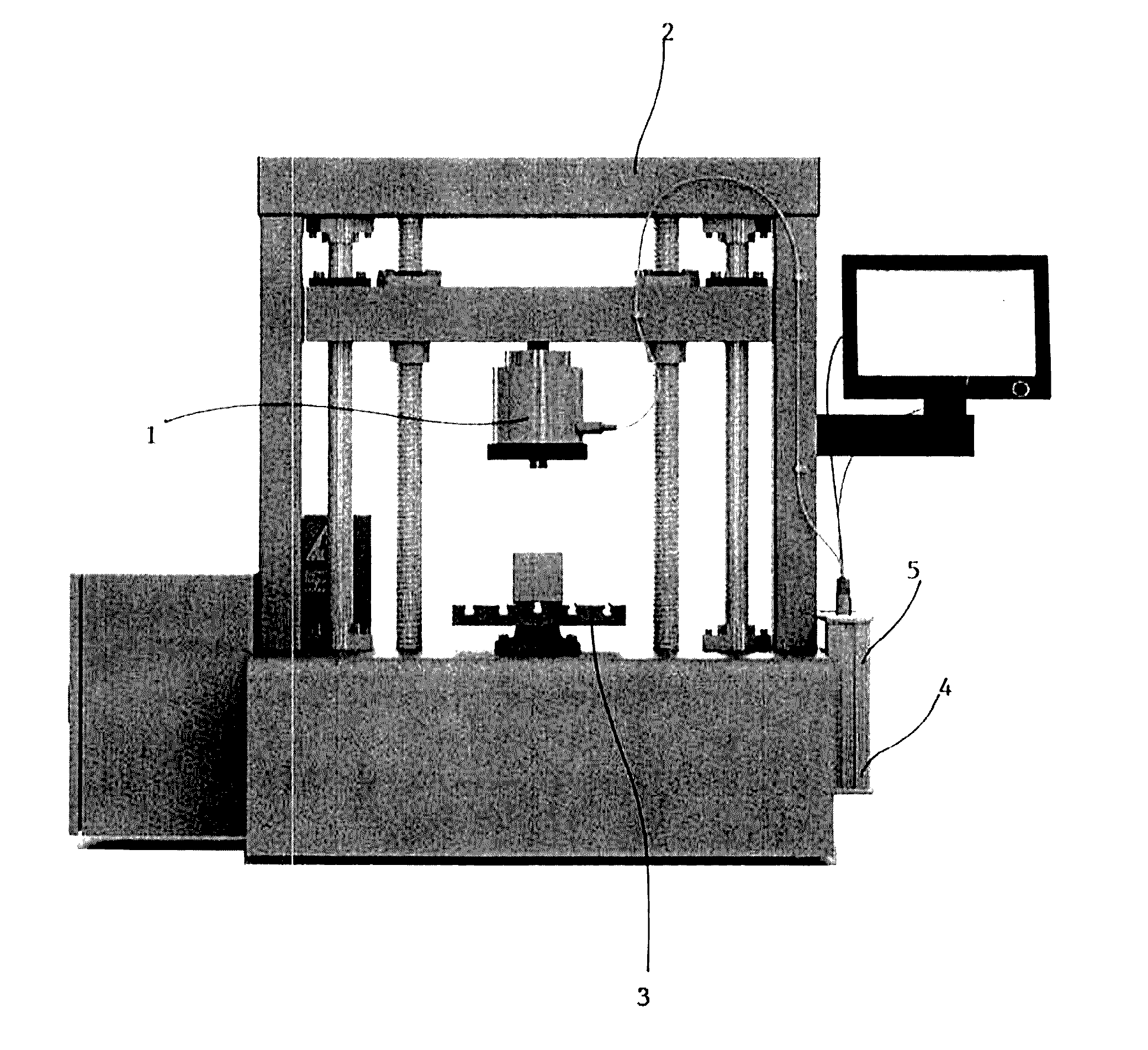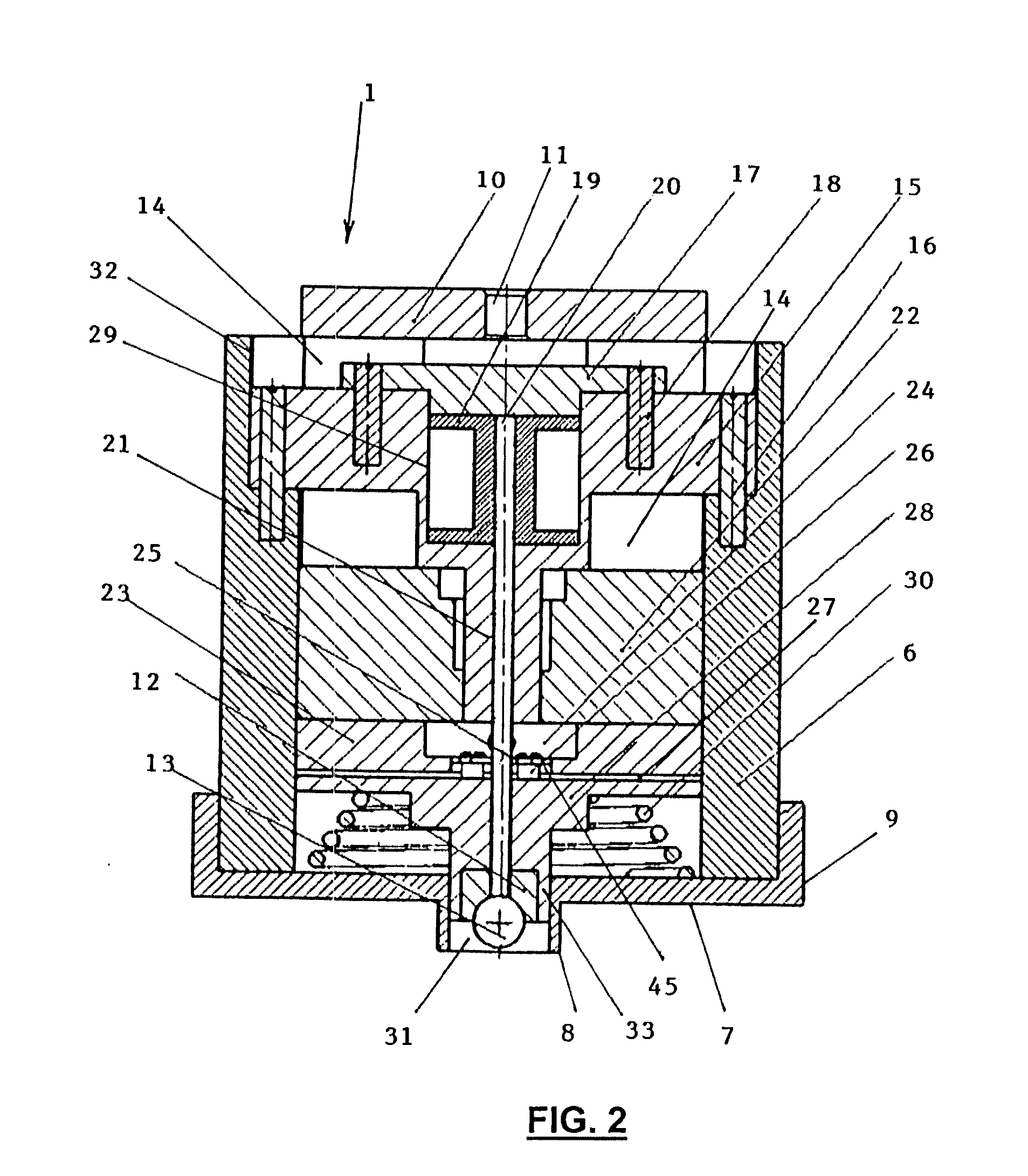An indentation device, instrumented measurement system, and a method for determining the mechanical properties of materials by the indentation method
a technology of indentation device and indentation method, which is applied in the direction of instruments, using mechanical means, electric/magnetic depth measurement, etc., can solve the problems of limited loading range, inability to manually apply the indenter during the measurement, and limited types of indenter available, etc., to eliminate the deformation of the indenter, eliminate the distortion of the components, and improve the accuracy. the effect of accuracy
- Summary
- Abstract
- Description
- Claims
- Application Information
AI Technical Summary
Benefits of technology
Problems solved by technology
Method used
Image
Examples
Embodiment Construction
OF THE PREFERRED EMBODIMENTS OF THE INVENTION
[0056]It is understood that the hereinafter described and illustrated specific examples of the realization of the invention are presented for illustrative purposes and not as a limitation of the examples of the realization of the invention to the cases shown herein. Experts who are familiar with the state of technology shall find, or using routine experimentation will be able to determine, a greater or lesser number of equivalents to the specific realizations of the invention which are specifically described here.
[0057]The instrumented measuring system for measuring and determining the mechanical properties of materials by the indentation method is schematically illustrated in FIG. 1. The indentation device 1 is connected to a loading mechanism 2, for example to an existing hardness tester, to its own mechanism, etc. The loading mechanism 2 is provided with a table 3 for the sample. To the indentation device 1 there is connected, via an a...
PUM
| Property | Measurement | Unit |
|---|---|---|
| diameter | aaaaa | aaaaa |
| angle | aaaaa | aaaaa |
| height | aaaaa | aaaaa |
Abstract
Description
Claims
Application Information
 Login to View More
Login to View More - R&D
- Intellectual Property
- Life Sciences
- Materials
- Tech Scout
- Unparalleled Data Quality
- Higher Quality Content
- 60% Fewer Hallucinations
Browse by: Latest US Patents, China's latest patents, Technical Efficacy Thesaurus, Application Domain, Technology Topic, Popular Technical Reports.
© 2025 PatSnap. All rights reserved.Legal|Privacy policy|Modern Slavery Act Transparency Statement|Sitemap|About US| Contact US: help@patsnap.com



